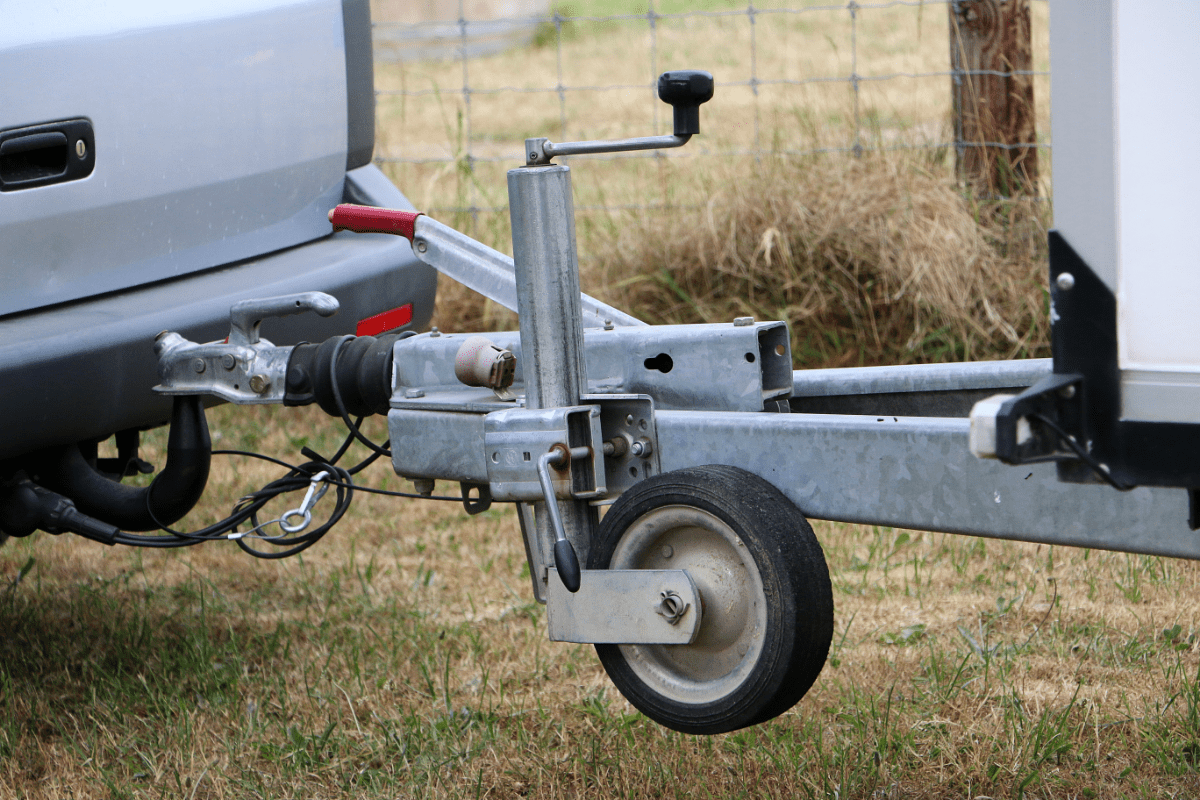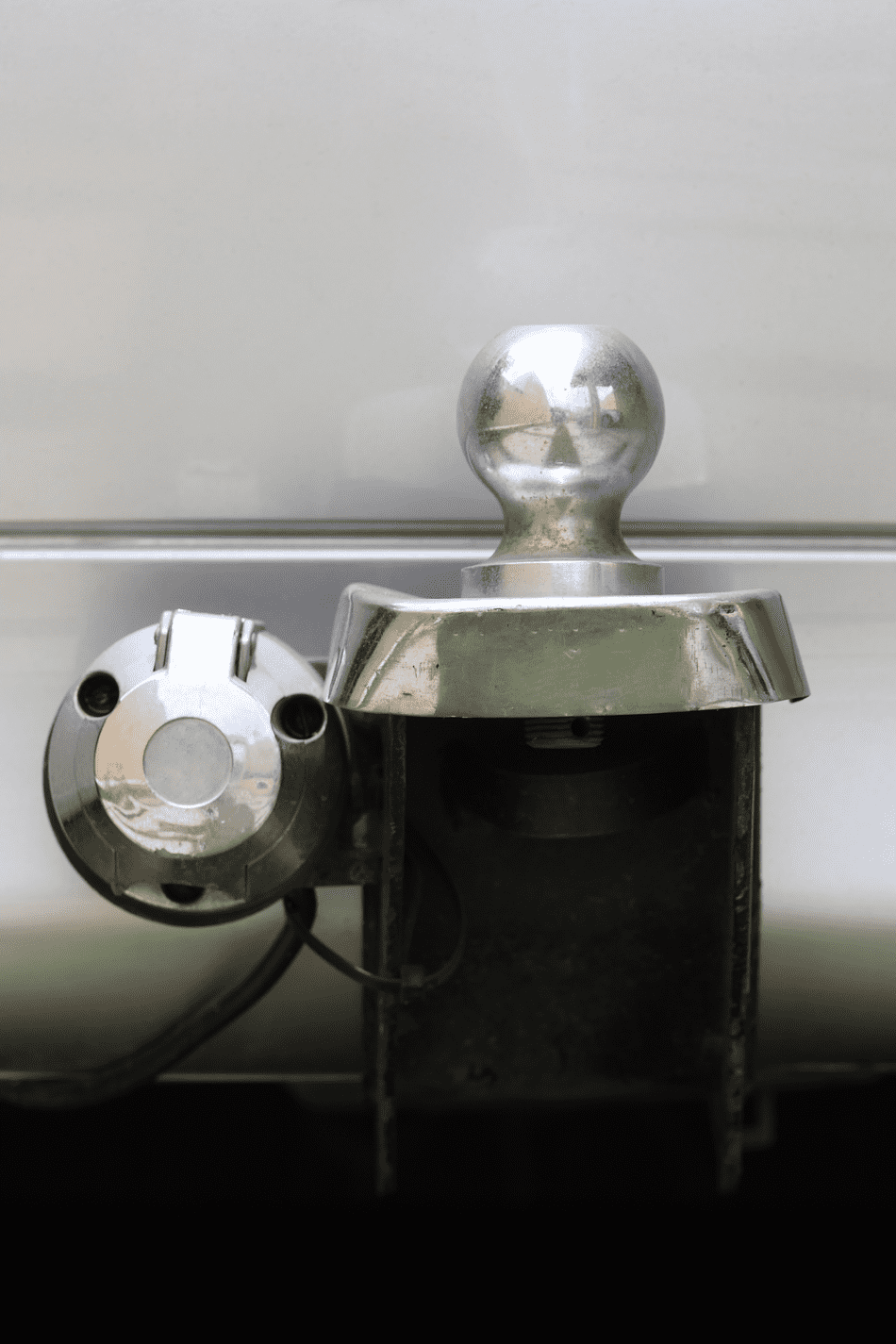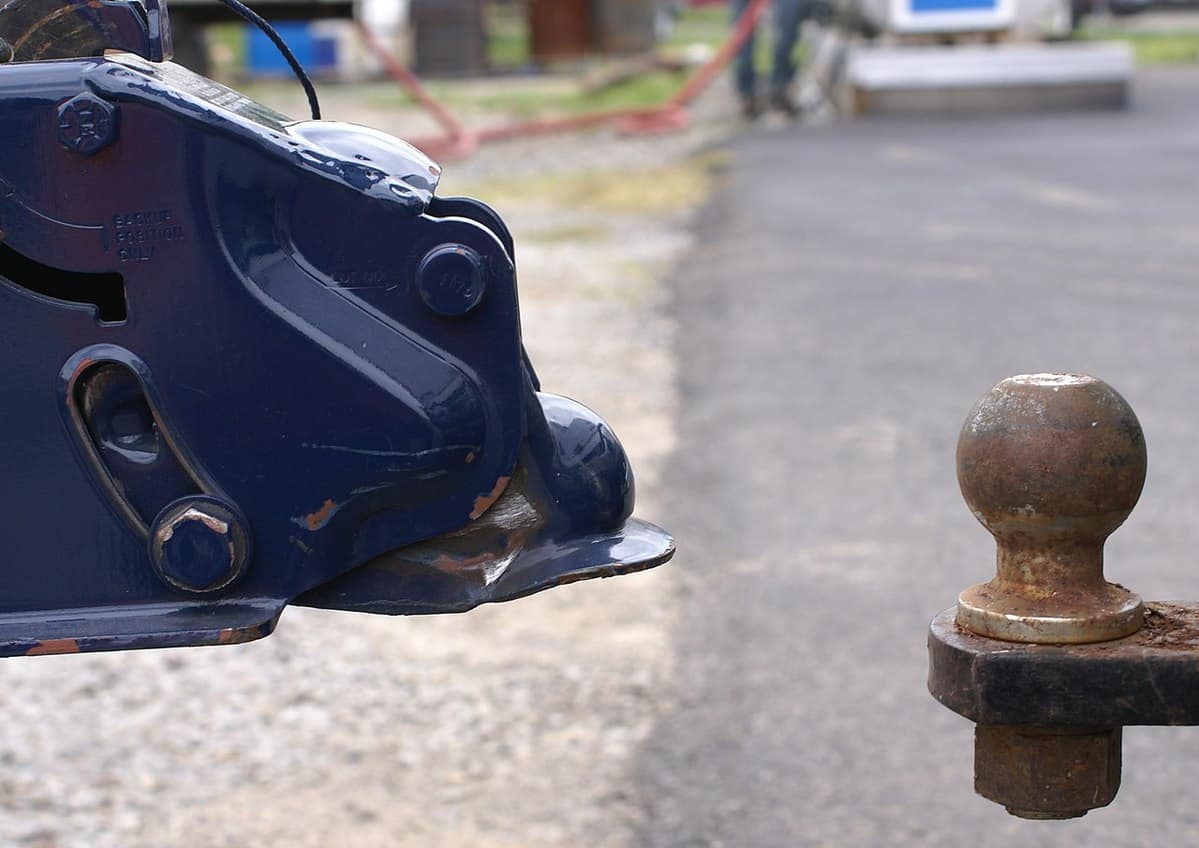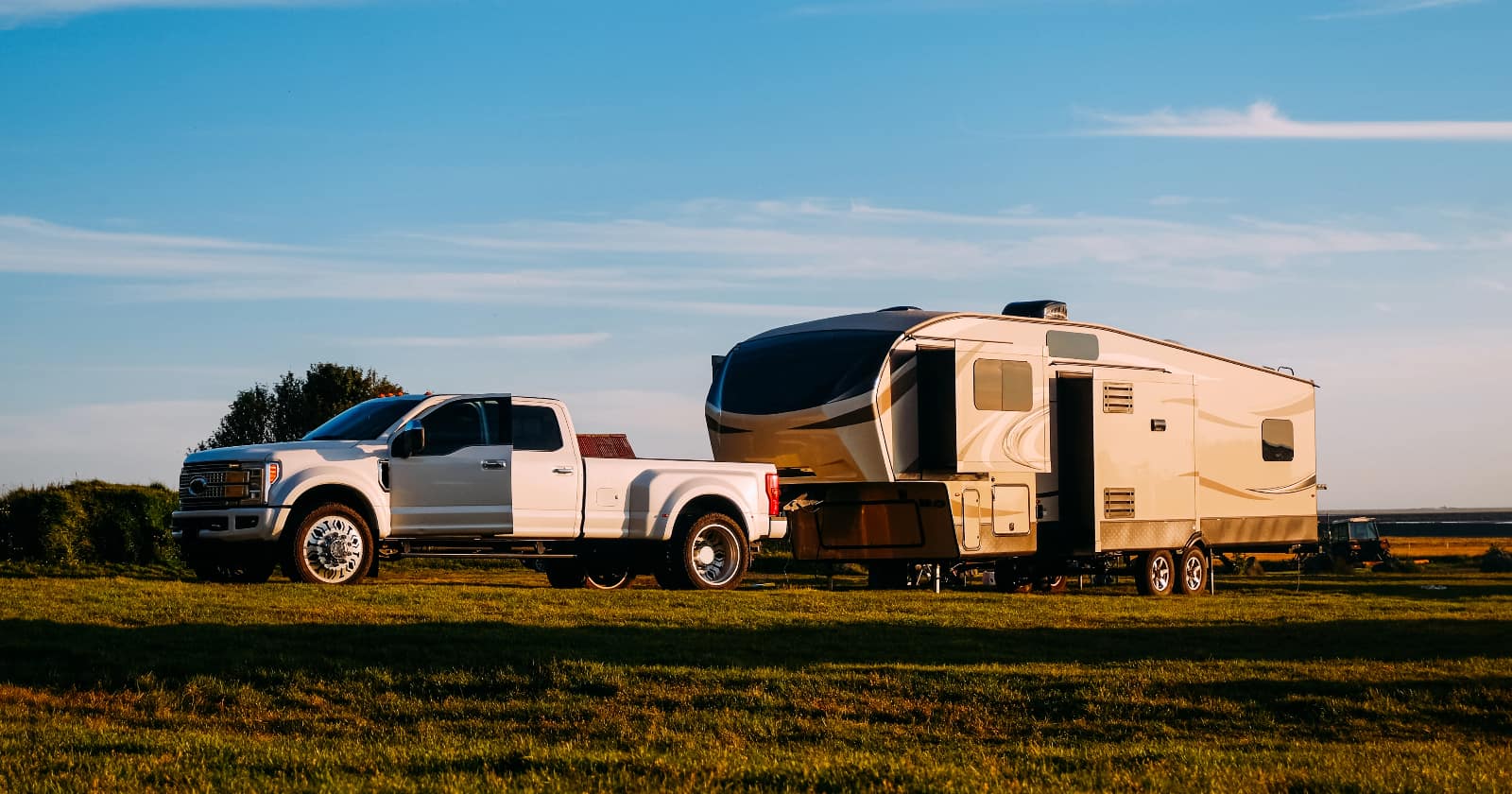The Right Hitch Is Imperative For Safety
Your trailer’s ball hitch is the essential connection between your vehicle and trailer. That means it’s crucial to pick the right equipment. But which ball hitch size should you use? We help you figure it out here.

Choosing a ball hitch size isn’t difficult. But, there are other things to keep in mind, such as weight limits.
Let’s take a closer look at the different ball hitch sizes. Then, we’ll show you how to decide which one you should use for your trailer.
What Are The Different Ball Hitch Sizes?

Your ball hitch is attached to your tow vehicle and is the attachment point for your trailer’s coupler. The majority of trailers are towed using a ball hitch, and they come in four sizes:
- 1-7/8″
- 2″
- 2-5/16″
- 3″
The larger the ball, the higher its maximum weight rating can be. However, keep in mind that not all ball hitches are created equal, and the exact weight rating depends on the specific ball hitch.
The 1-7/8″ ball hitch size is used primarily for lightweight towing. This ball hitch tops out at a maximum towing weight of 3,500 lbs. Because of this low weight limit, they aren’t commonly used to tow RVs but can sometimes be found on smaller trailers like pop-up campers.
The 2″ ball hitch is for medium-duty towing. This is the smallest size typically used for towed RVs. 2″ ball hitches top out at about 12,000 lbs, making them capable of pulling a variety of different trailers.
2-5/16″ ball hitches are for heavier duty towing, with weight limits maxing out at around 20,000 lbs. This makes this ball hitch size a popular choice for heavier trailers.
The final ball hitch size, 3″, is used for what’s known as “gooseneck towing.” A gooseneck is a kind of hitch that is installed in the bed of a pickup truck and can pull 30,000 lbs or more. However, RVs don’t typically use 3″ ball hitches. Instead, RVs needing higher weight limits and better control use a fifth-wheel hitch. These use a cylindrical “kingpin” on the trailer, which fits into a hitch installed in your truck bed.
Other Hitch Size Measurements: Shank and Rise

Tony Webster from Minneapolis, Minnesota, United States, CC BY 2.0, via Wikimedia Commons
You’ll also see measurements for the length and diameter of the “shank.” The shank is the threaded stem that attaches the ball hitch to the tow vehicle’s ball mount. The diameter depends on the weight class of the hitch, of which there are five:
- 3/4″ to 1″ diameter shanks are used for Class I (max 2,000 lbs) and Class II (max 3,500 lbs) hitches
- 3/4″ to 1-1/4″ diameter shanks are used for Class III (max 5,000 lbs) and Class IV (max 12,000 lbs) hitches, as well as some Class II and V hitches
- 1″ to 2″ diameter shanks are used for Class V (max 20,000 lbs) hitches
You’ll need to be sure the diameter of your ball shank matches the opening on your mount. You’ll typically use a Class III hitch or higher for most recreational towing.
Rise and Drop
Additionally, you’ll see the “rise” listed. The rise refers to how high the ball sits off its base. A ball below the base is called a “drop.”
The rise or drop measurement is important because your trailer and tow vehicle must be level. Your ball hitch needs to be at the correct height for safe towing.
To find out the correct rise or drop for your ball hitch, make sure you’re trailer and vehicle are both on level ground. Then you’ll need to take two measurements:
- Find the distance of your vehicle’s hitch from the ground
- The distance your trailer’s coupler is from the ground
Subtract the coupler height from the hitch height to get your rise or drop. A positive number means you’ll need that amount of drop, while a negative number indicates a rise.
So, for example, if you have a 13″ hitch height and a 10″ coupler height, you need a 3″ drop. But with a 15″ coupler height, you’d need a 2″ rise.
You can flip most ball hitches upside down, turning the rise into a drop and vice versa. There are also adjustable ball hitches, which let you set the rise or drop to exactly where you need it.
Which Hitch Size Should I Use?

Belinda Hankins Miller from U.S.A., CC BY 2.0, via Wikimedia Commons
Wondering what ball hitch size to use? You don’t usually have to decide yourself because your trailer manufacturer probably already decided for you.
When you buy a travel trailer or any kind of towed RV, it will already have a coupler attached. This coupler will be made for a specific ball hitch size, which is typically stamped into the metal of the coupler itself.
It’s essential to only use the specified ball hitch size for your trailer’s coupler. While the size differences might not seem like much, using a different size ball and coupler is a recipe for disaster. Doing so can lead to your trailer coming uncoupled in transit, meaning possible damage to your trailer or even other vehicles on the highway.
You should also keep weight limits in mind. Your ball hitch and the mount will both have their own weight limits, as will the coupler on your trailer. The lowest of these three weight ratings will be your maximum capacity. It’s essential your trailer doesn’t exceed this limit.
If your trailer weighs 10,000 pounds, your weight limit must be at least 10,000 pounds and preferably a bit higher.
What if You Want to be Able to Tow Different Trailers of Different Hitch Sizes?
But what if you want to tow different trailers with different ball hitch sizes? Maybe you have multiple RVs, like a small pop-up camper and a larger travel trailer. Or perhaps you regularly tow other trailers such as flatbed trailers. Either way, there’s a simple solution: multi-ball mounts.
Multi-ball mounts will have multiple ball hitch sizes that you can easily switch. Simply turn the mount to the ball size you need, attach the trailer, and you’re ready to go.
Picking the Right Hitch Size is Easy
Now you know all about picking the right ball hitch size for your trailer. It’s essential to stay under the weight limits and make sure all sizes match up for safe towing. As long as you do, you’ll have a great (and safe!) towing experience.





I know I need a 2 5/16″ ball and have one.
It’s marked for 12,000#
My trailer is about 7,000#
I’m considering going to a 20,000# ball for a safety factor.
Opinions?
B&W makes the best bumper pull and gooseneck hitches, bar none.
The stow-away adjustable bumper pull hitches come in all size ratings with 1, 2, and 3 different size balls.
Easy to help level your rv/trailer front end and minimize your tongue wait. Made in the USA!